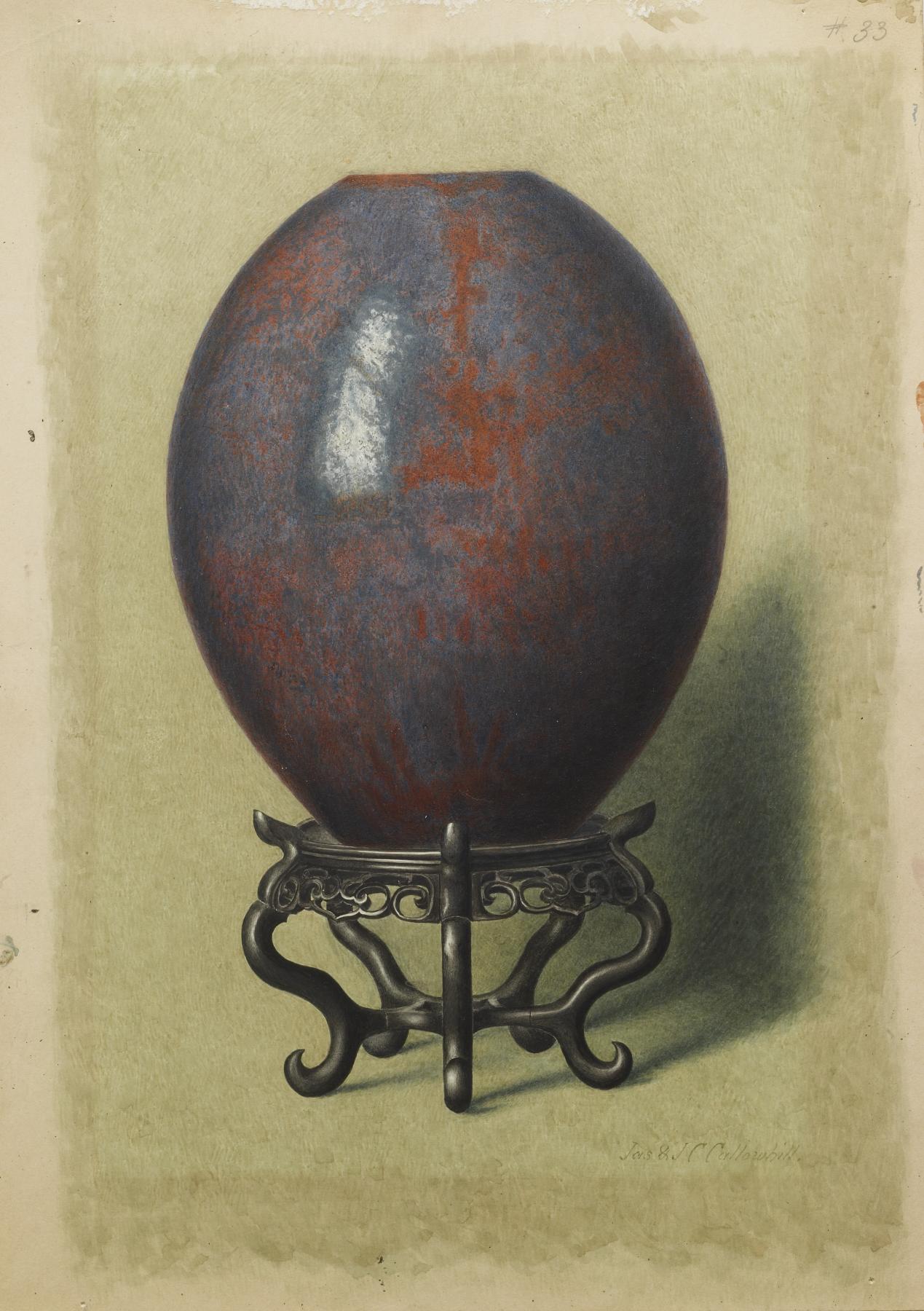Iridescent Iron-Rust Vase
(18th and 19th Centuries )
For every illustration in "Oriental Ceramic Art" (New York, D. Appleton and Company, 1897), an exceptionally precise watercolor was made of each piece chosen from Walters' collection to serve as a model and guide through the lithographic process. These were intended as exact portraits of each particular vessel. Louis Prang entrusted this work to James Callowhill (1838-1907) and his sons James (1865-1927) and Percy (1873-ca. 1955). The Callowhills had trained as ceramic painters in Worcester, England, before coming to the United States to work for Prang. With Prang, they primarily painted floral subjects for reproduction in chromolithography. During the seven years that it took to produce the watercolors for "Oriental Ceramic Art," the Callowhills lived and worked in Walters' house on Mount Vernon Place.
Inscription
Provenance
Provenance (from the French provenir, 'to come from/forth') is the chronology of the ownership, custody, or location of a historical object. Learn more about provenance at the Walters.
William T. Walters, Baltimore, 1889, by commission; Henry Walters, Baltimore, 1894, by inheritance [the watercolors were not completed until between 1895 and 1897, when Henry Walters finally took possession of them]; Walters Art Museum, 1931, by bequest.
Exhibitions
| 2011 | Realistic Perfection: The Making of Oriental Ceramic Art. The Walters Art Museum, Baltimore. |
Geographies
USA (Place of Origin)
Measurements
H: 15 7/16 x W: 11 3/16 in. (39.2 x 28.4 cm)
Credit Line
Commissioned by William T. Walters, 1889
Location in Museum
Not on view
Accession Number
In libraries, galleries, museums, and archives, an accession number is a unique identifier assigned to each object in the collection.
In libraries, galleries, museums, and archives, an accession number is a unique identifier assigned to each object in the collection.
37.2828



